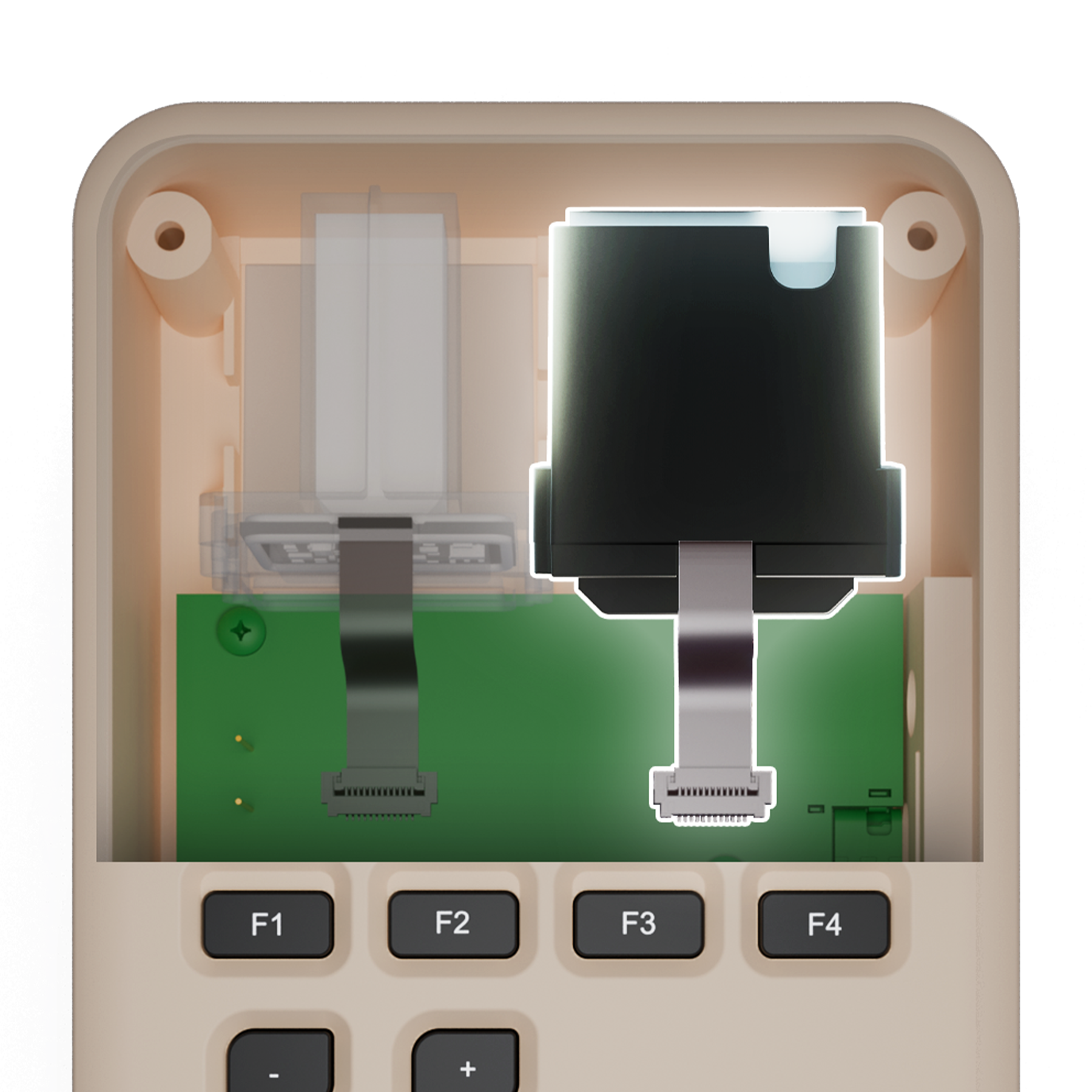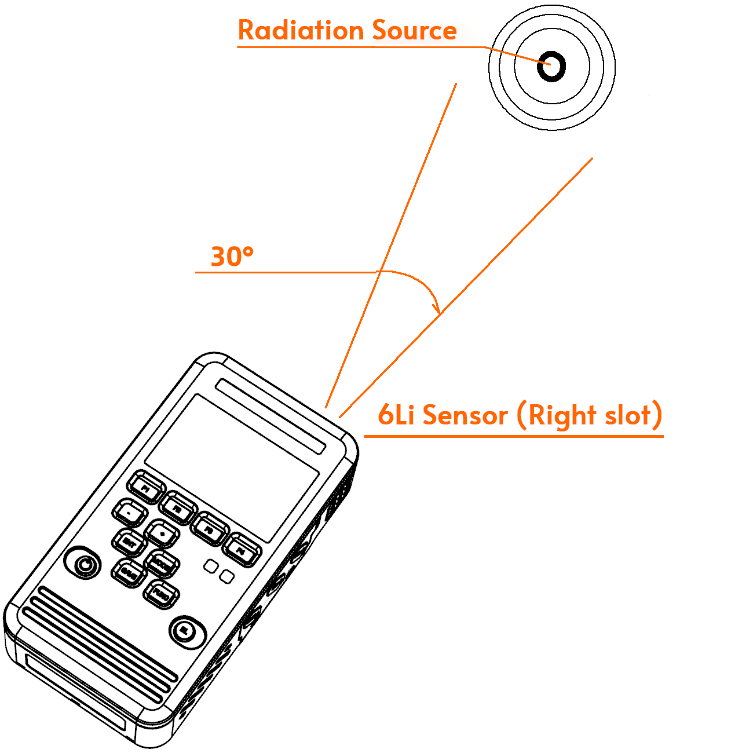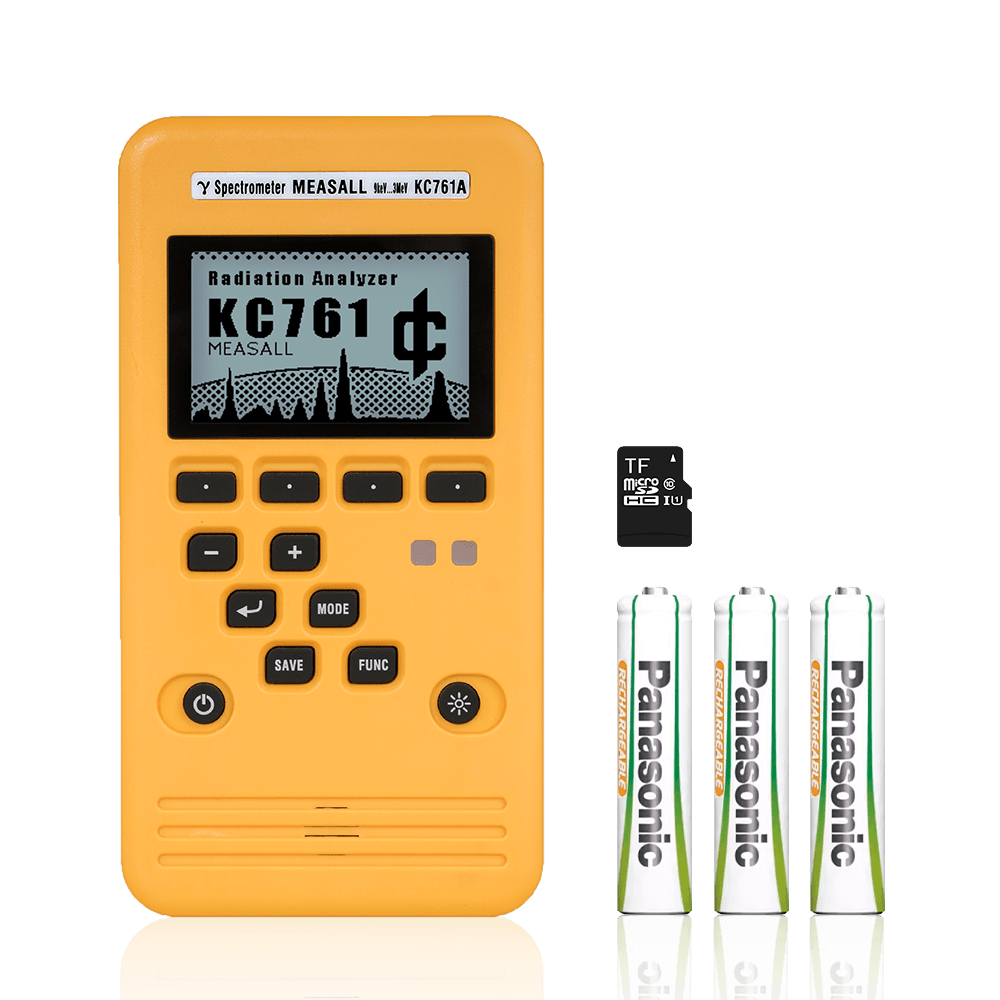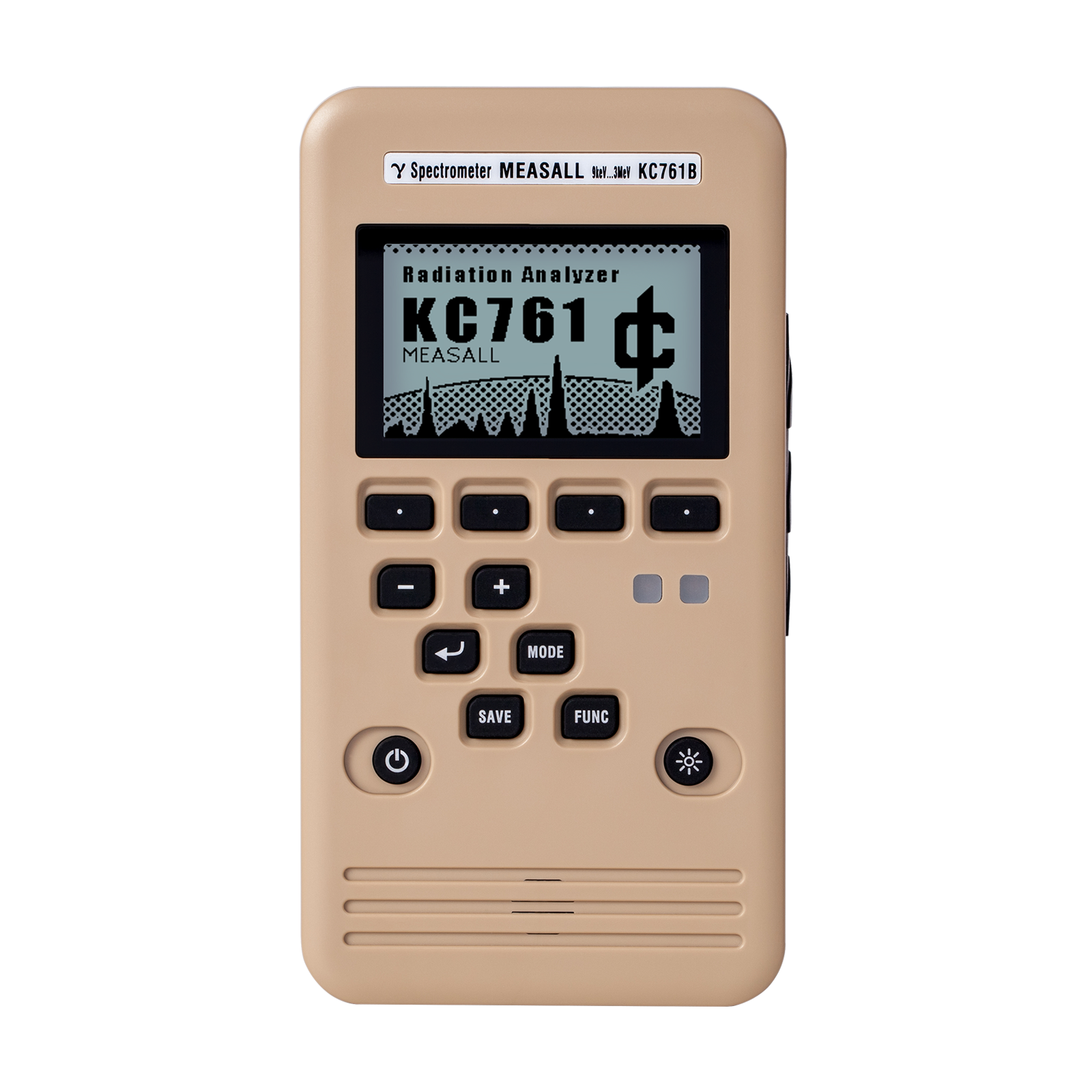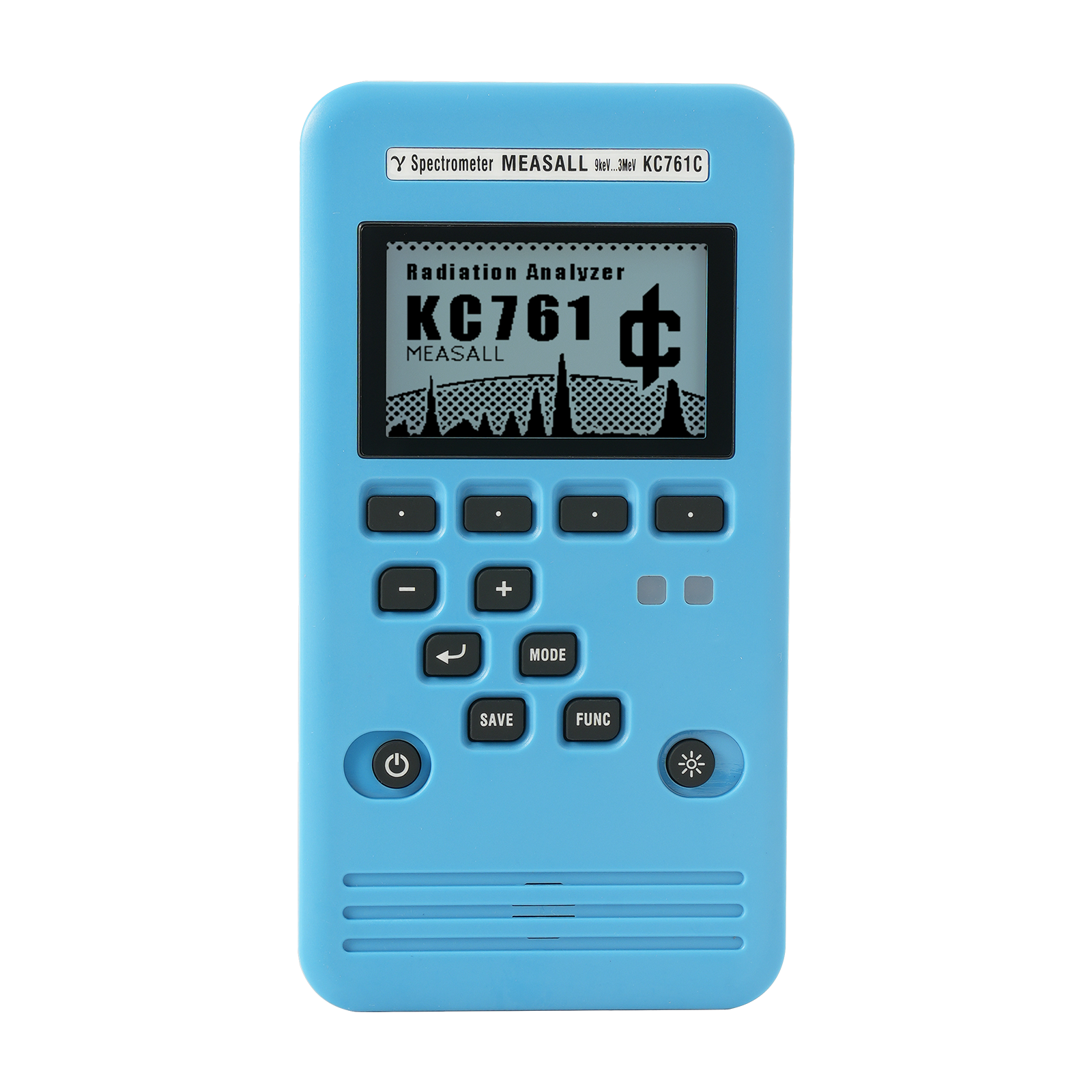MEASALL Neutron Sensor Option KC7601.31
Original price was: $599.00.$499.00Current price is: $499.00.
Tax excl. VAT added at checkout by shipping address.
For KC761A/B/C
10×10×3mm 6Li scintillator + SiPM
15mm HDPE Built-in Moderator
Neutron identification algorithm
Buy from Deepace Official
Delivery 10 days or fastest 4-7 days
2 Years Warranty 7 days Refund
KC7601.31 Neutron Sensor Module
Overview
The KC7601.31 is an optional neutron sensor designed exclusively for the KC761A/B/C models. This 6Li sensor is primarily optimized for low-energy neutron detection but is also responsive to medium and high-energy neutrons. When integrated with the KC761 series, it enables neutron flux density measurements in a wide range of environments. Given the specialized nature of neutron detection, a thorough understanding of the sensor’s specifications and performance characteristics is recommended prior to use.
Field of Application
The KC7601.31 is only compatible with KC761A/B/C models and is not supported by KC761 (base version). Typical applications include:
- Neutron Field Detection: Identification of neutron radiation fields and assessment of relative neutron flux.
- Scientific Research: Suitable for detecting neutron production and leakage in experimental settings.
- Radiation Source Identification: Ideal for locating neutron sources during laboratory or field investigations.
- Security and Personal Protection: Enhances detection capabilities for neutron radiation in sensitive environments.
- Hobbyist and Educational Use: Allows scientific enthusiasts to explore neutron detection safely and effectively.
Note: Due to the complexity of neutron dosimetry, dose rate measurements are provided for reference purposes only.
Technical Specifications
| Parameter | Details |
|---|---|
| Sensitive Cross-sectional Area | 1 cm² (100 mm²) |
| Built-in Moderator | 15 mm HDPE (High-Density Polyethylene) |
| Theoretical Detection Efficiency | (With built-in moderator, no external moderator) |
| Thermal Neutrons | >90% |
| 1 eV | ~90% |
| 10 eV | ~80% |
| 100 eV | ~60% |
| 1 keV | ~50% |
| 10 keV | ~30% |
| 100 keV | ~20% |
| 1 MeV or higher | <10% |
- Dose Rate Measurement Accuracy: Calculated based on theoretical models; includes a zero error of approximately 0.1 μSv/h due to advanced screening algorithms.
- Enhanced Sensitivity with External Moderator: When paired with a 5 cm thick HDPE moderator and exposed to an AmBe neutron source, the expected uncertainty for measurements above 2.5 μSv/h is estimated at ±20%.
- Gamma (γ) Screening Capability: For γ-rays between 1.3 and 1.9 MeV, the neutron-to-gamma count ratio is better than 10:1; for other energies, it is better than 1000:1.(Within the non-overloaded range of the gamma sensor)
Illustration: Typical Neutron Response Spectrum
The KC761x series includes standard CsI sensor, enabling advanced γ-ray suppression by subtracting the γ-response near 1.6 MeV from the neutron sensor’s data. For optimal accuracy, users are advised to avoid proximity to strong γ-sources such as 60Co, 40K, 232Th.
Usage Notes
- Directional Sensitivity:
- The neutron sensor features a directional design, installed in right slot of KC761x. Its 6Li scintillator is optimized for neutron capture when perpendicular to the incident neutron beam. Proper alignment is crucial for precise readings.
- Neutron Background Radiation:
- At sea level, neutron background typically ranges from 0.003 to 0.011 μSv/h. On land, slightly elevated levels may occur due to natural nuclides. These are generally below the instrument’s zero-error margin, making absolute background radiation measurements impractical.
- At high altitudes, cosmic ray-induced neutron flux increases significantly, averaging around 2.5 μSv/h at 10 km altitude. Variations from 1 to 8 μSv/h are common in mid-latitudes.
- Measurement Stabilization:
- A smoothing algorithm is employed, requiring 1 to 10 minutes to stabilize for reliable readings. Weaker neutron fluxes demand longer stabilization periods. Examples include:
- 0.5 μSv/h: ~10 minutes
- 2.5 μSv/h: ~3 minutes
- For background radiation, counts may take several minutes to stabilize. For low neutron flux (<1 CPM), it is advised to monitor cumulative doses for at least 1 hour to ensure accuracy.
- A smoothing algorithm is employed, requiring 1 to 10 minutes to stabilize for reliable readings. Weaker neutron fluxes demand longer stabilization periods. Examples include:
Pro Tip: Ensure proper alignment and minimal movement during measurement for optimal data accuracy.
Installation Guide for the Neutron Sensor on KC761/A/B/C:https://deepace.net/installation-guide-for-the-neutron-sensor-on-kc761-a-b-c/
Shipping channel:
We collaborate with leading logistics partners such as DHL, FedEx, and UPS to ensure swift and secure global transportation. Additionally, we have established partnerships with other reputable logistics providers in specific regions to offer efficient and cost-effective shipping solutions.
Delivery time:
Express: 5~8 days; (DHL/FedEx/UPS, fast and stable.)
General Logistics: 10~16 days;
Free shipping: 7~20 days, depending on the region.

